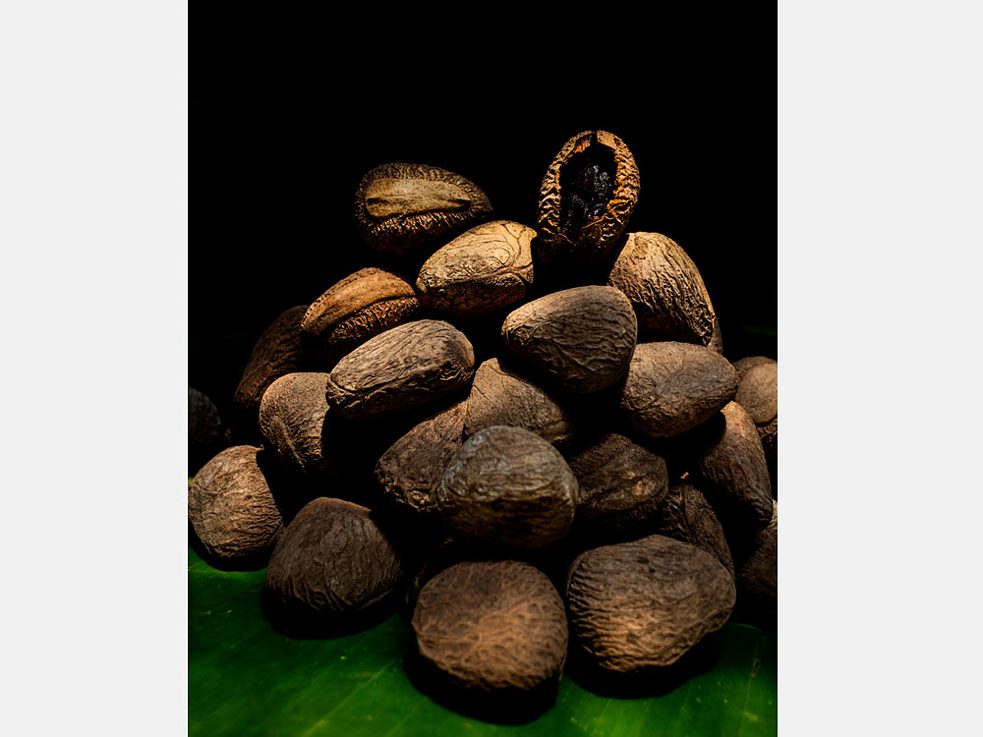It has the shape of a stone. The shell is hard. When it is broken with a hammer or a wood press, the black fruit pulp appears. Kluwak is an important spice for traditional Yogyakarta dishes such as brongkos and especially rawon dishes. It gives them the typical spicy taste and black color of the broth. The glutamic acid in kluwak can be used as a substitute for MSG. So, the black color comes from the kluwak pulp, right? Yes, that’s right! But if the kluwak seeds fall from the tree (kepayang), the fruit pulp is white. It is poisonous because it contains cyanuric acid.
To be on the safe side, the kluwak seeds are first boiled and soaked. They are then wrapped in banana leaves and buried in the ground. Only after two weeks is the kluwak pulp black and ready for consumption. It is quite difficult to find kluwak on the market; only a few vendors have it on offer. Further, it’s not easy to recognize good quality. I first learned more about kluwak when I moved to Yogyakarta. Up to that point I knew only black food color from soy sauce and squid. After learning more about the benefits of kluwak, as a kerupuk lover I would find it interesting to see whether kluwak can also be used for the aroma and natural coloration of kerupuk. Would anyone like to try this?
